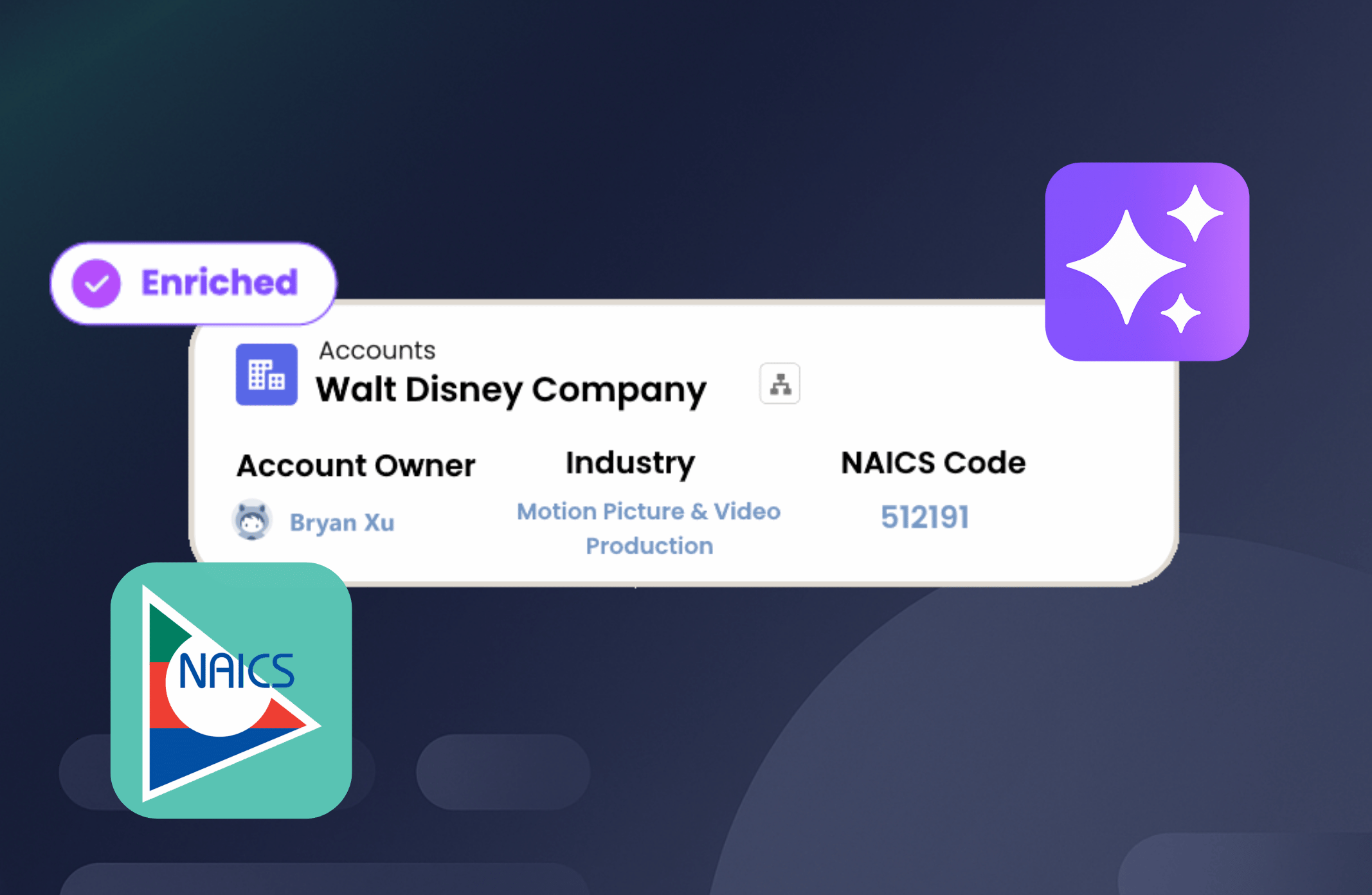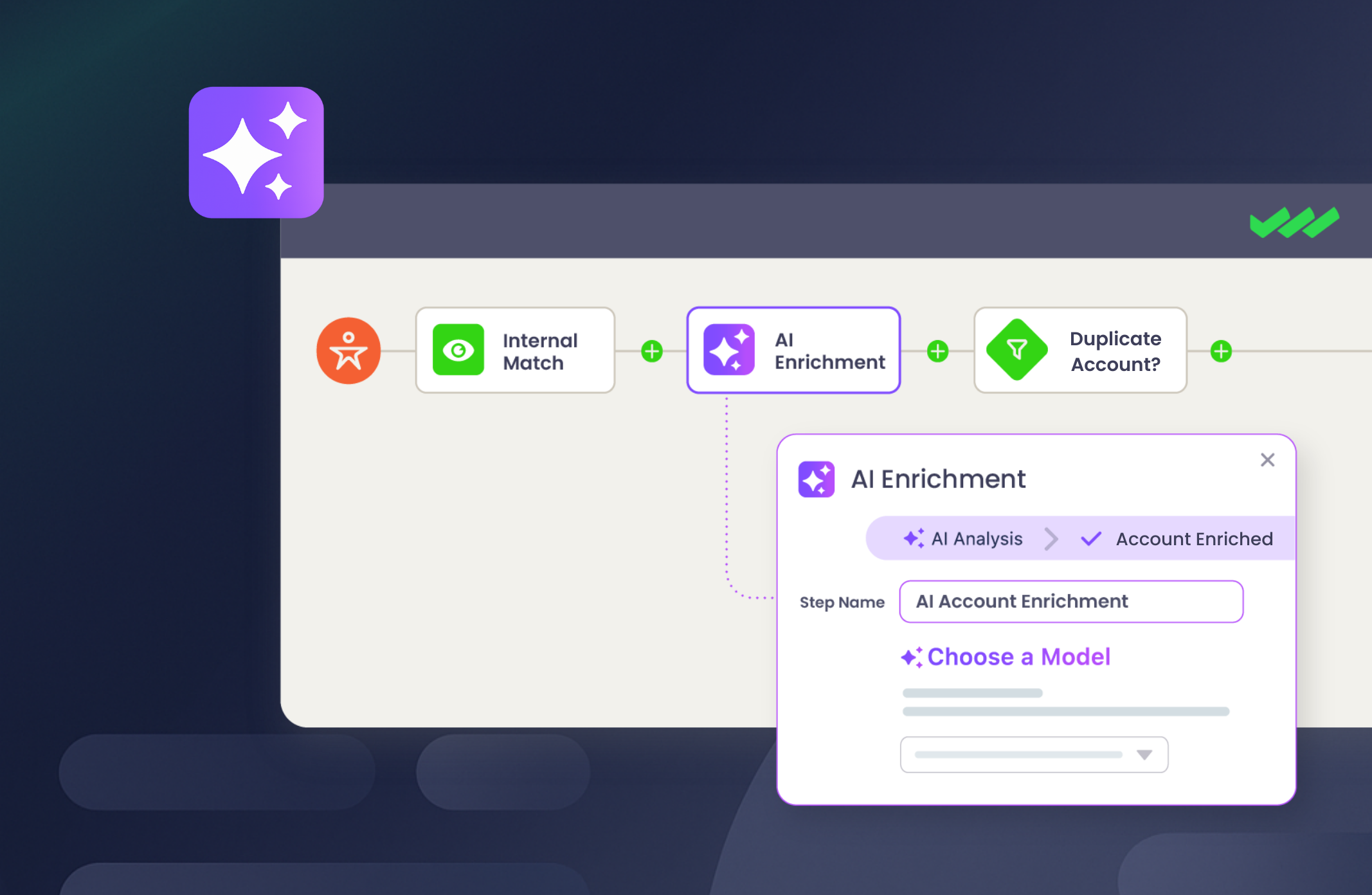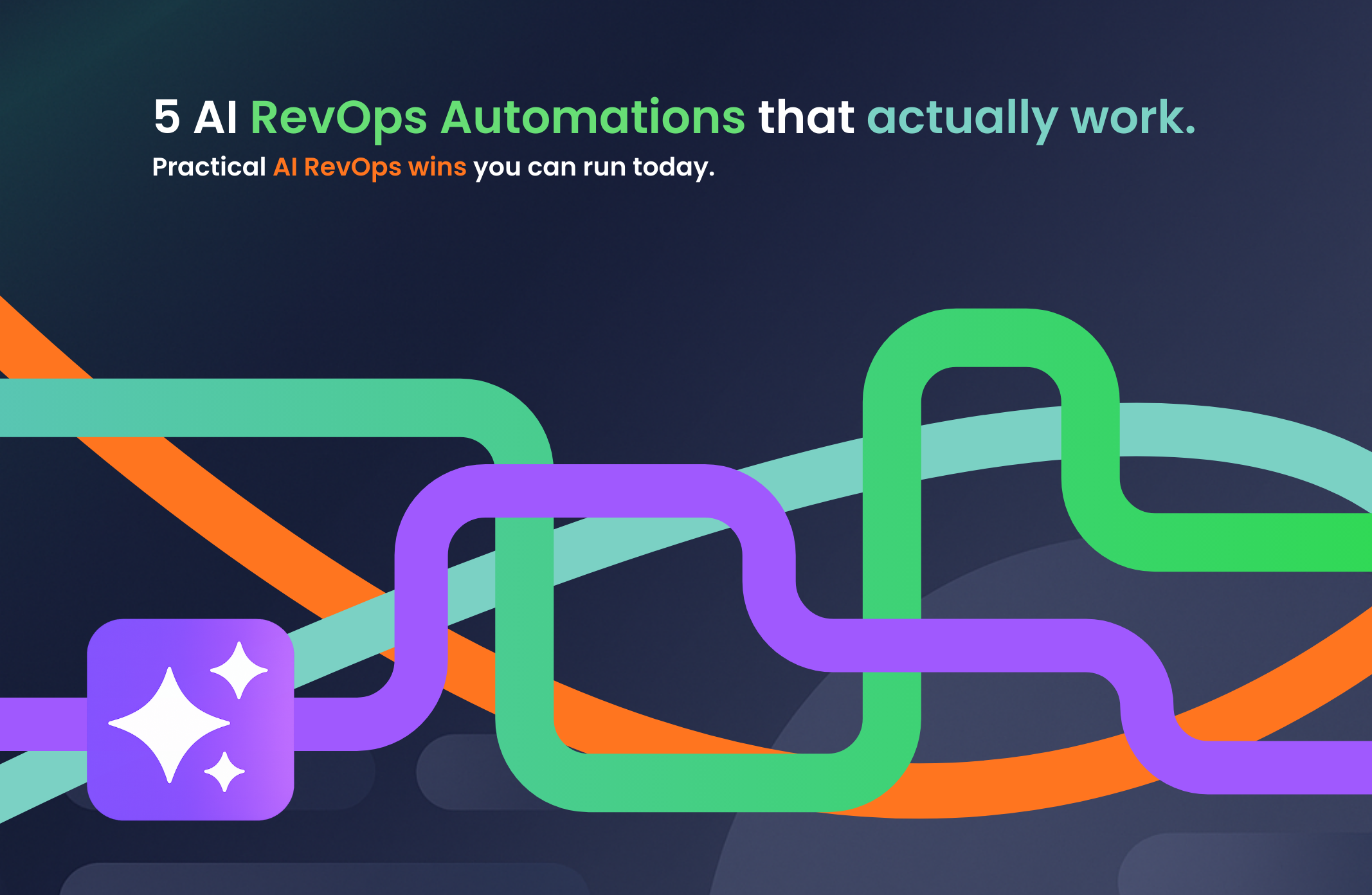How to Get a Complete View of Your Enterprise Accounts to Accelerate Account-Based Selling
Did you know that 81% of sales reps believe it’s important to have a connected view of data across the entire customer journey?
With a connected view, sales teams can have the context they need to have tailored and meaningful conversations without any friction or account conflicts, and revenue teams can better drive account-based strategies and understand their largest customers.
But the reality? Data is siloed across teams and the customer journey. Put simply, marketing handles all things leads, sales handles opportunities, and customer success handles cases. Disjointed data across the customer journey can cause a breakdown of data integrity with no source of truth.
At the enterprise account level, parent-child account data is disconnected. Oftentimes, organizational hierarchy data (for instance, a corporate family tree) is not accurate, or managed manually which leads to data proliferation — making it overwhelming, unreliable, and difficult to report on.
Making sure that your entire revenue team has an accurate, connected view of your data is crucial to effectively closing account-based sales.
Unfortunately, many companies are struggling with data quality and establishing a clear way forward to achieve a complete, connected view of accounts in Salesforce.
The Accelerator: Automated Account Hierarchies
While account hierarchies exist within Salesforce, there’s no native functionality to automatically build them. That means, without hours of sweat and manually connecting accounts, your go-to-market team doesn’t have a complete picture of your enterprise accounts and all its related subsidiaries.
Automatically connecting parent-child accounts in Salesforce will give your go-to-market team visibility into your most important enterprise accounts. Those enterprise accounts then provide land and expand opportunities.
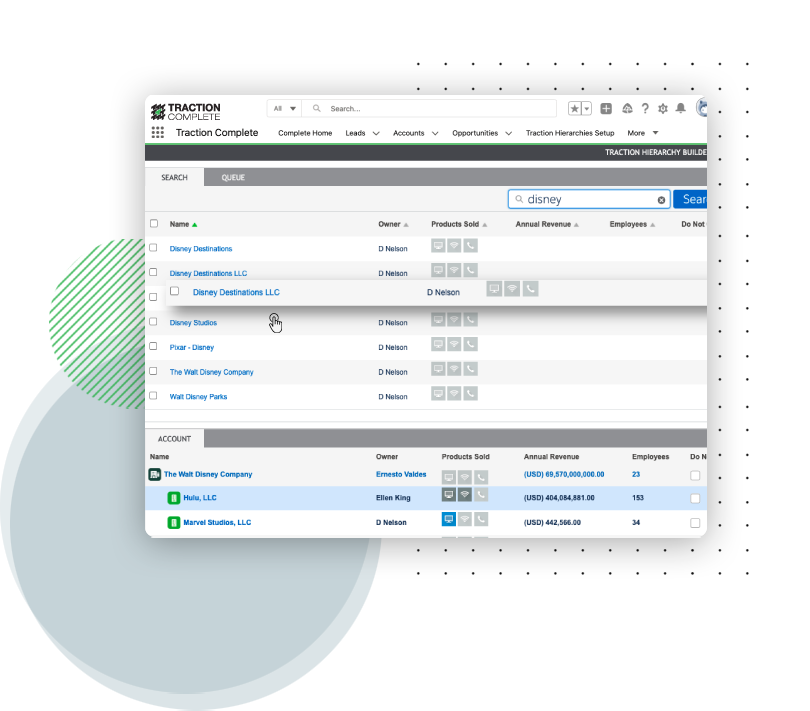
Sales reps are always looking to prospect or expand their sales footprint across an existing customer’s departments or businesses, and to do so they need visibility into that customer’s data. In order to sell more, they need to have insight into the account including what’s been sold, what hasn’t, any subsidiaries-their history, relationships, existing contracts, and where there is potential to sell more across the enterprise.
Meanwhile, Sales Operations teams are often left dealing with potential territory disputes and rep conflicts. These issues can be avoided with a connected view of account hierarchies. It’s important for every facet of the business.
Revenue teams and leaders need visibility into their largest customers for reporting purposes and data-driven decision-making. The alternative is manually connecting parent and child accounts to understand the value of the whole organizational hierarchy–or where subsidiaries fall within a hierarchy.
Ready to get better visibility over your enterprise account data?
Download our FREE eBook on automated account hierarchies here.
How to Get a Complete View of Accounts with Automated Account Hierarchies in Salesforce
Define an Account
To determine if your organization has a strong grasp on accounts, ask each department “how many customers do you have?”
If the answer varies it’s time to sit down and establish a clear definition – this is also the first step in cleaning up your accounts.
Challenges round defining an account can arise when a company has multiple offices, subsidiaries, or buying authorities. For example, after Windstream completed two mergers, they had multiple instances of the same account in Salesforce. Some accounts were done with a physical billing address, some were done with the subsidiaries address, and some were done with a bill-to address.
To establish an account definition, it’s important to involve all departments like sales, marketing, customer success, and finance in this discussion.
Start by understanding your unique edge cases and set best practices.
For example, say you are selling to a US-based customer but they sign the contract under an entity out of Ireland or somewhere with a more beneficial tax situation. Your team should know and agree to follow a policy for that edge case.
Creating a detailed account definition will also help your team set the foundation for choosing what records are necessary and which can be removed.
Enrich Your Data
If the goal is to get a complete view of account data to enable your entire go-to-market account-based team, you need to consider any data that may be missing from your Salesforce org.
If you don’t, your org is missing key parent and child accounts that are part of the corporate family tree.
Your sales are only as good as your prospect data, right? If your sales team is missing information on key target accounts, it’s next to impossible to report on the entire enterprise account. This means your team is working with partial information. Without the final pieces to the puzzle, it’s much more challenging to find success.
Third-party data sources like Dun and Bradstreet can enrich all records with firmographic data and help establish a source of truth. This is also an important step in aligning your dataset and keeping it up to date on an ongoing basis.
With enriched data, you can access account information that isn’t currently within your Salesforce org. With this additional account information, you have the building blocks for better visibility into the entire enterprise.
From there, you have all the records you need to then link and automate the process.
Link and Automate
At this point, you may be feeling slightly overwhelmed by all this data.
The good news is that you’ve got a map of your account’s organizational family tree through your third-party data source. Now it’s time to connect it in your CRM. Why? You can have all the data in the world but if it’s disconnected and disorganized, it’s not actionable.
While Salesforce does have a native account hierarchy or parent-child relationship field that can link accounts, it’s an incredibly manual process. It requires one painful click at a time and is likely to result in human error.
Realistically, it’s just not sustainable to manually build and stay up to date with. On average, it takes about two to five minutes per record to link — and you’ve got a lot of records.
That’s why it’s so important to automate this process. And this is where Complete Hierarchies, Traction Complete’s automated account hierarchy builder, comes in to help.
With Complete Hierarchies you can avoid common issues with hierarchy building such as:
- Creating multiple hierarchies of the same corporate family tree
- Missing levels within a single hierarchy (note: even if you’ve enriched the data, without organizing or linking the data some hierarchies will still have gaps)
- Not having a source of truth or visibility for your go-to-market team
- Struggling to align holding companies
Linking your accounts is a critical step in organizing your accounts and it just become a sweat-free process.
Clean Up Your Data
With connected parent-child accounts, you can then run reports to spot duplicates. As you comb through your report you will be able to spot what accounts are flagged and merge duplicate companies that might have slight variations in their name or address.
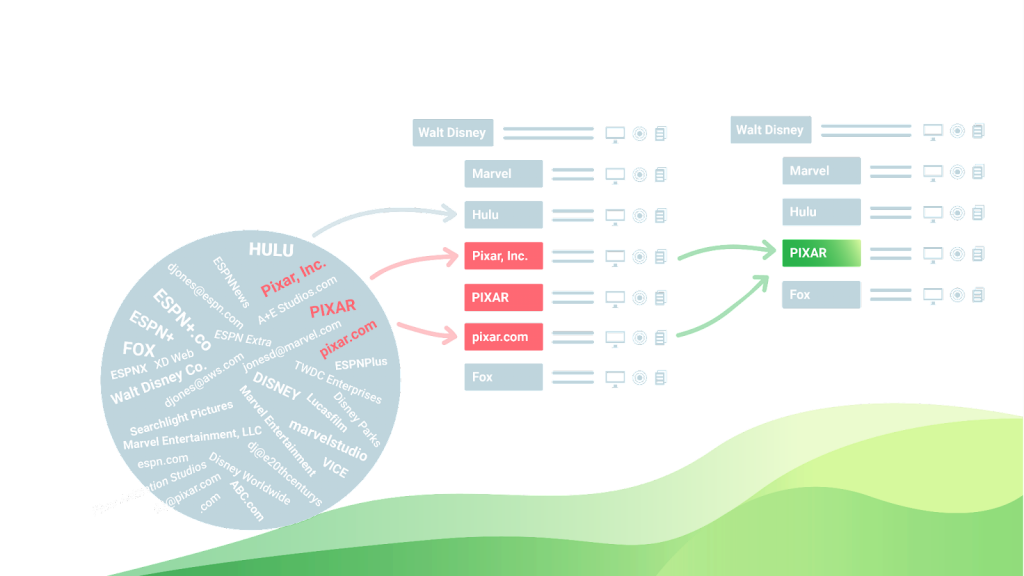
If you’re faced with thousands of duplicate records, it might be time to look for a third-party tool that can support mass deduplication. You might look for a solution that offers a matching engine to help uncover hard-to-find matches and supports mass merging.
Here are two key factors to keep in mind when you’re starting your data cleanup journey:
- Get as close to 100% accurate as possible: This means clean data, made of accurate records that are enriched by a third-party source and without duplicates.
- Don’t just clean up for now, clean up for the future: Determine processes or practices needed to ensure that once data gets clean, it stays that way.
And in order to make sure both of these goals are achieved, it’s essential to have measures in place and full visibility into your data.
Make Data Visible for Smarter Enterprise Selling
Once you’ve organized your parent-child accounts and cleaned up duplicates, you’ll be able to easily identify new sales opportunities. You’ve armed your entire go-to-market team with a complete view of their enterprise accounts across the entire corporate family tree.
By making data visible to your sales reps, they can easily see areas of a customer’s business that they aren’t currently doing business with and spot opportunities for cross-sell and upsell.
This ensures each record has the following information pulled from the entire corporate family tree:
- What products have been purchased
- Which contacts were involved in the opportunity
- What cases have been submitted by the company recently
Quick tip: Add the account hierarchy (make it visible) on the multiple record pages in Salesforce – including lead, opportunity and more, as opposed to just on the account record.
Many sales reps don’t often click into the account record. For instance, if an incoming lead comes in they will need to “Google” around Salesforce or navigate to the account before clicking into the hierarchy.
By ensuring this information is accessible, teams are able to easily move from accounts to objects and time isn’t wasted navigating through Salesforce.
Moving Forward With Clean, Connected Data
It’s no secret. Cleaning up your Salesforce org or CRM can be an overwhelming task. And it’s hard to keep it at top of mind when your main priority is making sales.
But by creating a complete, connected view of accounts, your revenue team has a clear representation of your customers and their corporate structure. Instead of going in blind, they’re empowered to have informed conversations with customers, expand their sales footprint, and improve the overall customer experience.
With the help of Traction Complete, you can start your path to clean data with clear account hierarchies and a solid strategy for landing enterprise-level deals that are crucial for driving revenue.

